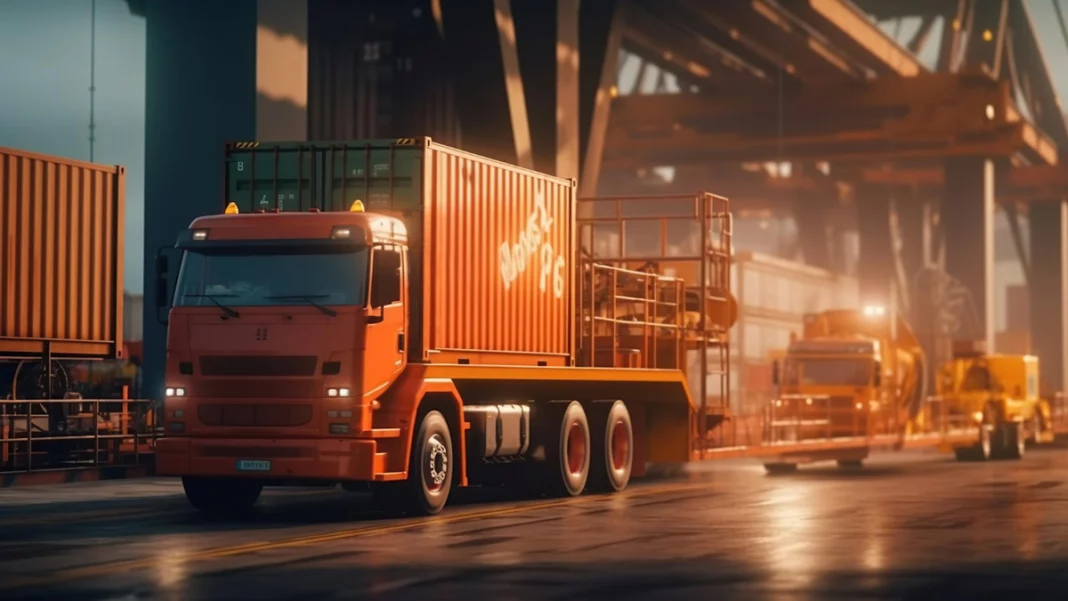Effective logistics administration is essential for businesses in order to run smoothly in today’s fast-paced world. India is among many nations that have adopted electronic technologies to facilitate the flow of products across national boundaries. The advent of the e way bill framework in India has transformed cargo transportation by fostering transparency and responsibility while limiting opportunities for tax fraud. We shall examine the bill system in-depth in this blog, as well as its significance and advantages for businesses and our economy as a whole.
About An e way bill:
It is an electronic document created on the federal government’s online platform, the e way bill portal. It is for the state-wide and internal transportation of commodities with a value greater than a predetermined threshold. The invoice includes data on the consignment from others, including its place of origin, destination, and other pertinent details needed for efficient tax administration and tracking of items in transit.
Purpose of the bill:
Establishing a standardized and efficient system to trace the movement of products is the primary goal of adopting the e way bill system. The technology intends to make interstate travel seamless and to fix the flaws in the previous paperwork-based method. The system’s main objectives are as follows:
- Compliance Simplified: By removing the need for several permissions and documentation, the system lessens the compliance burden on businesses, enabling quicker and easier transportation of goods.
- Preventing Tax Theft: The system dramatically reduces tax evasion by implementing strict surveillance and online tracking of products. It guarantees a level playing field for all enterprises.
- Increasing Transparency: The technology gives tax officials immediate insight into the flow of products, thus making it more straightforward for them to check for conformity and take appropriate action if needed.
How Does It Operate?
Registered taxpayers, transporters, and tax officials can use the incorporated internet site that powers the e way bill service. It is how it goes:
- Registration: Organizations must register on the portal in order to create eway bill. Users can use the system and start the process after registering.
- Bill Generation: The registered taxpayer creates the e way bill when items need to be carried by giving information, including the consignor and consignee, invoice number, quantity, value, etc. According to the nature of the transaction, the bill may be produced by the provider, beneficiary, or transporter.
- Validation and Authentication: The e way bill gateway authenticates the supplied information before generating the EBN (e way bill Number), a special bill number. Every step of the transport procedure refers to this number.
- Recording the bill: For record-keeping reasons, the created e way bill may be downloaded, printed, or saved digitally. Throughout transit, the product must be accompanied by an original copy of the EBN.
- Monitoring and Inspection: Tax authorities can always check the validity of an e way bill while transporting. In order to maintain complete openness, carriers also amend the brim with information about the vehicle, the route, etc.
Advantages:
Management, administration, and the financial sector as a whole have significantly benefitted from the deployment of the e-way bill system. Some significant advantages are:
- Efficiency and cost savings: By Doing away with the need for various transportation permits, the system cuts down on paperwork and related expenses. Things can move more quickly, enhancing effectiveness and ensuring on-time deliveries.
- Reduced Tax Evasion: By strengthening tax compliance and drastically reducing incidents of tax evasion, the e way bill system has decreased tax evasion. Continuous monitoring and tracking of commodities ensure a fair and open market by discouraging businesses from underreporting or misrepresenting shipments.
- Simplified Logistics: The bill system streamlines logistics administration by offering a centralized platform for creating and managing bills. Eliminating manual paperwork, several permits, and the ensuing delays streamlines and improves the efficiency of the transportation operation.
- Higher Tax Revenue for the Government: The system’s adoption has led to increased revenues from taxes for the government. Taxing authorities can increase government revenue and stimulate economic expansion by ensuring companies pay right through improved surveillance and tracking.
- Better Security: Throughout the transit of products, the e way bill system strengthens security. It contributes to preventing theft, fraud, and illicit utilization of vehicles by giving accurate data regarding the movement of commodities. Additionally, the technology enables authorities to respond quickly to oddities or inconsistencies.
- Improved Inventory Control: Companies can have better control over their inventory thanks to the e way bill system. Therefore, stock-outs or excess stocks decrease, production and distribution processes are better managed, and product movement is monitored. Improvements in the oversight of supply chains and cost savings result from this.
- Business Ease: The e way bill system’s launch aligns with the government’s goals for business convenience. It facilitates a more business-friendly atmosphere, streamlines regulatory processes, and lowers administrative barriers. Consequently, this draws investments, promotes entrepreneurship, and accelerates economic development.
Conclusion:
In India, the e way bill system has revolutionized the fields of logistics and tax collection. It has significantly streamlined operations by replacing the traditional paper-based system with a more straightforward, digital one. Moreover, it brings numerous benefits to businesses, the government, and the economy as a whole. The system has significantly changed how goods circulate across state lines by providing transparency, preventing tax cheating, and making compliance easier. The e way bill system demonstrates India’s dedication in order to upgrade logistics. It establishes a positive business environment as businesses embrace the digital revolution.
Also Read: Understanding icegate: India’s Revolutionary E-Payment System




